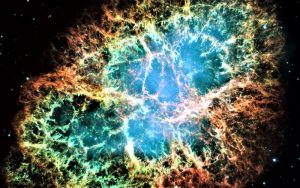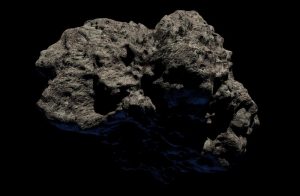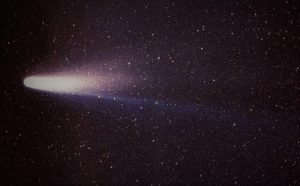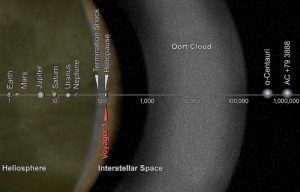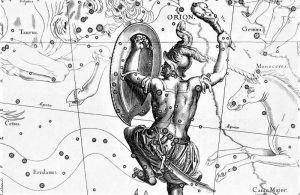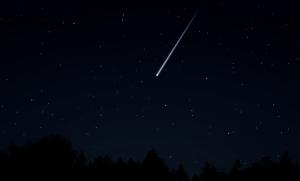Crab Nebula
To talk about the Crab Nebula, it is important to know what a nebula is. This type of structure is a giant cloud of dust and gas that is found in space. Some nebulas come from the gas and dust expelled by the explosion of a dying star, such as a supernova. Other nebulas are regions where new stars begin to form, which is why some nebulae are called "stellar nurseries".
What is the Crab Nebula?
The Crab Nebula is the remains of a supernova explosion. It is one of the most studied and observed space objects because it represents a very useful source of radiation to study the different celestial bodies that exist in outer space.
The nebulas are made mainly of hydrogen and helium. The dust and gases in a nebula are widely dispersed, but gravity can slowly begin to gather lumps of dust and gas. As these groups become larger and larger, their gravity becomes more and more powerful.
History of the Crab Nebula
This nebula was first observed by the Englishman John Bevis in 1793, who is considered its discoverer, although the nebula had already been seen and recorded by Chinese and Arab astrologers, who had said that it was like a star that could be observed by day, and that it could be seen for a continuous period of 22 months, day and night.
William Parsons, third count of Rosse, observed it in 1840 and gave it the name of Crab Nebula, since when he made a drawing of the nebula, it looked like a crab. At the beginning of the 20th century, several photographs of the nebula indicated that it was expanding, and it was determined that it had formed about 900 years ago. Analysis of historical documents proved that the supernova that created the Crab Nebula occurred in April or early May 1054, reaching its maximum brightness in July, being brighter than any other celestial object at night except the moon.
Origin
The Crab Nebula was first observed by John Bevis in 1731 and rediscovered in 1758 by Charles Messier while observing the passage of a bright comet. It is believed, according to several studies, that it originated 900 years ago.
Characteristics
The main characteristics of the nebula are as follows:
- It is a resplendent mass made up of gas and dust.
- It has an oval shape that measures approximately 6 arc minutes in length and has a width of 4 arc minutes.
- It has a density of about 1,300 particles per cm³.
- The filaments that form it are the remains of the atmosphere of the progenitor star, and are composed of helium and ionized hydrogen, carbon, oxygen, nitrogen, iron, neon and sulfur.
- It expands at a speed of 1 800 Km/sec.
- The temperature of the filaments that make it up is approximately 11,000 and 18,000 K.
- Its center has a diffuse blue region.
- It is a nebula of plerionic type, this means that it obtains its energy from the rotation of the pulsar and not from the material that has been thrown into the interstellar medium during the explosion of the supernova.
- In the center of the Nebula, two stars can be observed, and it is thought that one of them was the one that caused the nebula.
- It is about 6 light years old.
- It is also known by the names of M1, NGC 1952, Taurus A and Taurus X-1.
Where is the Crab Nebula located?
The Crab Nebula is located in the constellation of Taurus, which means it is about 6500 light years from Earth.
Known Objects
Among the known objects of this nebula we know that the nucleus of a star died so violently that it became a pulsar. A pulsar is a neutron star that is rotating at high speed. It has a mass very similar to that of the Sun with the difference that its radius is a few kilometers. The Crab pulsar rotates on its axis at a tremendous speed of 30 turns per second and also has a magnetic field of 100 million teslas. Having a very intense Magnetosphere, it is capable of converting the object into an electromagnetic radiation emitter, which, due to the rotation of the star on its axis, can be seen from our planet as brief periodic pulses, and this is the reason why it is given this name.
Observation
It is important to know that many of the observations that have been made in the nebula suggest that the Crab pulsar has a very complex magnetic field and that it has four poles instead of two, like other nebulae. It is also believed that the main radio pulse is emitted from a plasma cloud located on the surface of the star.
It is widely used by astronomers to calibrate X-rays and flux density, as it provides a fairly strong signal that is used to check the synchronization of X-ray detectors.
In the center of the Crab Nebula is located the star nucleus that exploded giving rise to the nebula, which is a body that rotates at high speed. Maybe one of the things that have been observed and which is the most surprising is that the neutron star emits a flash of radio waves that go in the direction of the Earth with each rotation, like a maritime lighthouse, 30 times per second.
How to cite this article?
Briceño V., Gabriela. (2019). Crab Nebula. Recovered on 23 February, 2024, de Euston96: https://www.euston96.com/en/crab-nebula/
